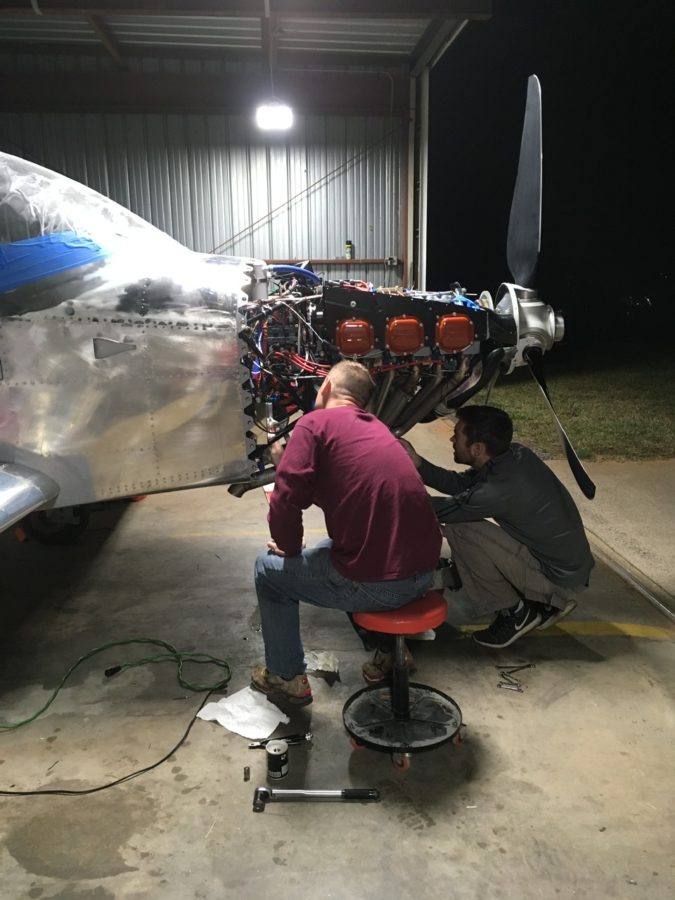Ahhh, the day is upon us, my dear friends. First engine start! Builders dream of this moment then quickly wake up in a panic sweat from the nightmares of “oh shit, what did I forget” or “how can I instantly destroy my $XX,000 engine before it even flies?”. Needless to say, I was nervously excited.
The afternoon started off with removing the lower plugs and purging the cylinders of the remaining preservative oil. Most had drained out but I was really surprised at how much was still in there. By spinning the engine/prop with the starter and no spark plugs (top coil disconnected as well), it purges the cylinders as well as creates oil pressure in the engine for first start.
It took five or six cycles lasting around 5-10 seconds each to finally build oil pressure. I suspect it might have been less had something not been awry, but I’ll get to that in a moment. Either way, I left a nice stain of oil splattering on the ramp and celebrated when we saw a positive number on the oil pressure gauge.
By the time we reinstalled the plugs, put the EGT probes back in place (yep, I drilled them where they block the plugs which will have to get corrected eventually), and did yet another final check of the engine, it was dark and cold. I pulled the plane out and Laura pointed the car headlights while Dan and Todd observed from either side. I won’t spoil the ending, so click play below and enjoy the show!
She’s alive!!!! Bam, pow, fireworks, roars to life! Ah, the sound of a new born baby gurgling and screaming, not sure if that’s normal or the onset of disaster. It’s normal, folks. But not everything was perfect. The common practice of hand tightening an oil filter on a car or anything else for that matter does not apply to aviation. The filter wasn’t torqued and I had a pretty good stream of oil escaping, possibly affecting us getting the initial pressure indication as well. We pushed her back into the hangar and got to work cleaning up.

The second start was better. While it didn’t sound perfect, the engine started and ran well. Dan had helped me set up the timing light so we could set the magnet position on the flywheel with the SDS ECUs. This step is no longer required by SDS but I feel that getting it custom set with your exact setup will result in a better tuned engine, especially when running LOP and advanced ignition. We set the position pretty easily and it already sounded better. I also remembered to turn the alternator on after a few minutes which really helped charge the battery!
The SDS system does not use a mixture lever thus you have to shut the engine off in a different manner. Ross suggested simply turning off the electric fuel pump which would kill the engine (no mechanical pump). The first time I did this, the engine continued to run for a good 30 seconds. I’m still not sure why, but subsequent runs and testing results in a timely shut down just as pulling the mixture lever would do. By the end of the third idle run, we were all freezing, tired, and ready to call it a night. The engine is alive, healthy, and leak free!
